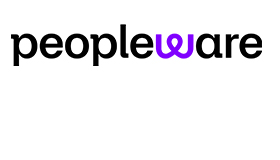Chris Dealy at injixo explains how to successfully introduce gig customer service in your call centre.
For decades, entertainers such as musicians and comedians have used the word “gig” to describe the one-off appearances they make in return for a fee.
In recent years, the gig concept has been enlarged to include all work performed on-demand by self-employed individuals.
When you think of gig workers, you picture mainly mobile workers such as delivery drivers. But according to Aberdeen Strategy & Research, gig customer service is already part of the contact centre staffing landscape.
The gig economy is significant and growing rapidly. According to Statista, 59 million workers in the US are classified as independent workers, which is 36% of the workforce. According to CPD, 14.7% of UK adults work in the gig economy.
That has grown from 5.8% in 2016 and 11.8% in 2019. By the end of 2022, CPD predicts that 7.25 million people will work in the gig economy. According to a survey by the TUC, 60% of gig workers are aged under 34.
In this 2-part series, I’m going to explore the pros and cons of gig work in contact centres, and provide some tips for using workforce management (WFM) to make the gig economy a win both for call centres and gig workers.
- Pros and cons of the gig economy in contact centres (this post)
- How to plan for gig agents in your contact centre
Pros and Cons for Gig Call Centre Agents
Pros
- Work/life balance Gig customer service agents can fit their working hours around their personal life and commitments, not vice versa. This particularly appeals to students, carers, and parents.
- Better hourly pay rates than those for permanent employees are often available. Sales commission-based gigs are an opportunity to earn serious money – but do require a sales mindset. And self-employed people can offset expenses against income and reduce their tax bills.
- Extra cash Gig work lets workers supplement their salary from a permanent job to fund a life event such as a new home, a vacation, or even Christmas. According to CPD, 48% of gig workers in the UK also have a full-time job.
- Become a ‘digital nomad’ Contact centre gigs let people work for companies anywhere in the world, from anywhere in the world.
- Try before you buy Gigs provide the opportunity to gain experience in contact centre and customer service work before applying for a permanent job.
- Greater variety of work Because gig workers are not dedicated to a single employer, they can take on multiple, diverse gigs and avoid the boredom which sometimes characterizes contact centre work.
Cons
- No income security Many organizations strive to provide a steady stream of work, but there will always be quiet periods. Work and therefore pay is provided entirely at the discretion of the company. Companies are not obliged to pay the statutory minimum wage and gig agents in developed countries may find themselves competing with their counterparts in lower-wage countries.
- Financial planning is more difficult Gig workers without a regular income struggle to get mortgages and loans.
- No employee fringe benefits Sick pay, paid vacation, pension provision, parental leave, or health insurance are off the table for gig customer service agents.
- No welfare safety net Gig workers don’t qualify for out-of-work welfare payments. They didn’t qualify for the UK furlough scheme during the Covid-19 pandemic, for example.
- Loneliness Working in a gig call centre typically means working alone. There is usually no need to go into an office and there are few opportunities for personal interaction. For some personality types, gig work can be stressful.
- Self-discipline is not optional Workers in the gig economy must have good personal organization skills and be self-motivated. Contact centres will not accept a lower standard of schedule adherence from gig workers than permanent employees, for example.
- One-way street Not only do gig workers find it harder to provide employer references when applying for permanent jobs, but their lack of on-the-job up-skilling might also make them less attractive to employers. Plus, once gig workers have taken control of their work/life balance, it can be emotionally challenging to return to permanent employment.
Pros and Cons for Contact Centres
Pros
- Schedule efficiency Contact centre workload is often characterized by peaks and valleys in demand. Even with part-timers, this variable workload is notoriously difficult to cover with permanent employees without creating periods of wasteful over-staffing. Gig customer service agents can be brought in for short shifts to cover the peaks and thus more precisely match supply and demand.
- Cost savings Gig workers do not have paid vacation, parental leave, sick pay or even breaks, so there is little shrinkage overhead. The company just pays for productive time and there are no national insurance/social security costs or pension contributions. There is usually no need to provide workspace or technology, since the gig worker typically uses their own home and equipment.
- Agility Sometimes, the organization needs a specific skill for a limited period of time, for example, the launch of a new product or a price change. The ability to bring in gig workers for just as long as there is demand lets companies plan quickly and cost-effectively for one-off campaigns.
- 24/7 operation Having a global pool of gig workers means that it can be easier and less costly to provide round-the-clock service than it is with local employees. You can engage gig agents in offshore time zones to cover customer demand that would otherwise require expensive and unpopular overtime at home.
- Wide talent pool Since gig workers typically register online and nowadays contact centre staff can easily work from home, organizations can attract candidates from around the country – or around the world – and bypass skill shortages in the local area.
Cons
- Hiring Given that gig workers typically work a small number of short shifts, you’ll need to find several gig workers to create one full-time equivalent (FTE). Consequently, the average effort in attracting, selecting, and vetting gig workers is greater than that for permanent employees. Moreover, there are specific vetting considerations for gig workers. You wouldn’t want a member of your gig team doing gigs with your competitors, for example.
- Training and onboarding Gig agents need the same skills as permanent employees. Even gig agents who work a few hours per month need to go through a complete onboarding and training process. It may make sense to use gig workers for less complex interactions to minimize the training requirement, but there’s no escaping the fact that the training overhead is proportionately greater for gig workers than for permanent staff.
- Turnover Since gig workers go where the work is and can select gigs based on their own preferences, you may struggle to retain gig workers even if they are high performers and a great fit with your organization.
- Different style of management Gig workers are not employees. Neither the company nor the worker has entered into a long-term commitment, so normal people management practices need to be replaced by service provider management practices.
- Coverage risk You can’t accurately predict the availability of your gig agents. And they may be tempted to take on more work than is realistic with multiple companies, and burn themselves out. Consequently, it’s dangerous to assume that you will always be able to cover peaks of demand purely with gig agents.
Up Next
The second post in this series introduces best practices that enable contact centres to integrate gig agents into the workforce in a way that optimizes outcomes for the business, the agents, and ultimately the customers. And all that while avoiding headaches for the planner.
This blog post has been re-published by kind permission of Peopleware – View the Original Article
For more information about Peopleware - visit the Peopleware Website
Call Centre Helper is not responsible for the content of these guest blog posts. The opinions expressed in this article are those of the author, and do not necessarily reflect those of Call Centre Helper.
Author: Peopleware
Published On: 17th Apr 2023 - Last modified: 17th Jun 2024
Read more about - Guest Blogs, Chris Dealy, Peopleware






 Peopleware is a leading workforce management (WFM) solution, trusted by over 500,000 users in 30+ countries. With smart forecasting, automated scheduling and real-time management, organizations can optimize workforce efficiency and keep work aligned with demand. From precise time tracking to flexible planning, Peopleware helps organizations boost operational efficiency and foster a more engaged, productive workforce.
Peopleware is a leading workforce management (WFM) solution, trusted by over 500,000 users in 30+ countries. With smart forecasting, automated scheduling and real-time management, organizations can optimize workforce efficiency and keep work aligned with demand. From precise time tracking to flexible planning, Peopleware helps organizations boost operational efficiency and foster a more engaged, productive workforce. 









